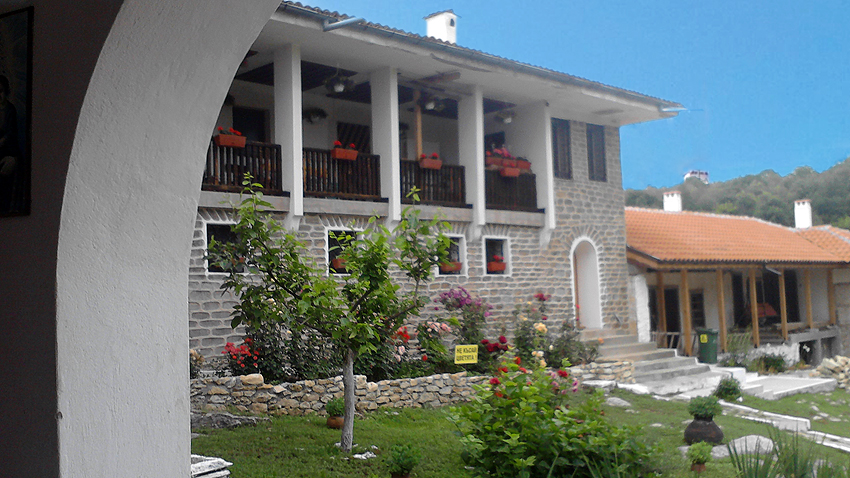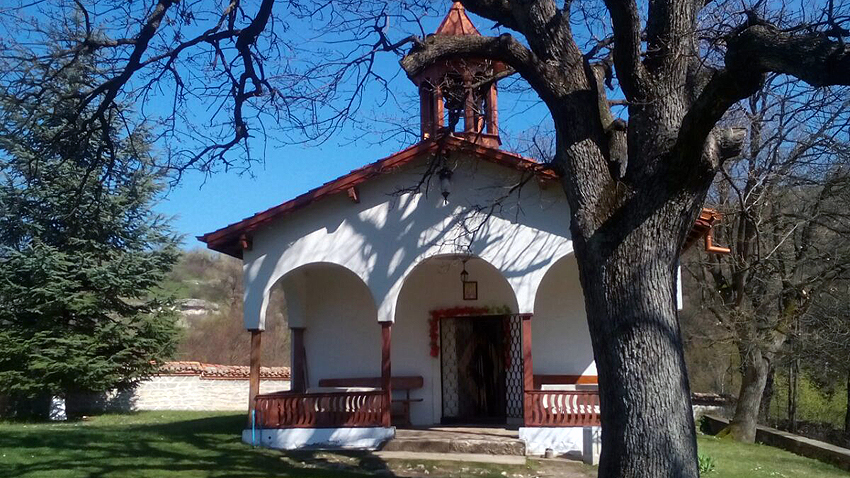With its scattered houses, huddled away amidst lush foliage, Zlatna Livada looks much more like a neighbourhood than it does like a village. Lying in the fertile Thracian plain, it is a place that has fascinated people for centuries with the magnetic appeal of its nature, as testified to by an ancient Thracian sanctuary, whose remains are still to be seen to this day, or the ruins of a Roman fortress perched on top one of the hills nearby, a fortress that once held strategic significance. A landscape once traversed by the main road linking Constantinople with Serdica – Via Diagonalis.
In this corner of Central Bulgaria, some 15 kilometers from Chirpan and 1 kilometer from Zlatna Livada rises the oldest monastery built in the Bulgarian lands – the St. Athanasius monastery of Chirpan and Zlatna Livada. But St. Athanasius is not only the oldest monastery in Bulgaria, it is the oldest cloister in Europe.
More details from Nancy Marinova, curator of the Museum of History in Chirpan.
 “According to the saint’s passional while he was traveling to a church council in Serdica in 344, he stopped over at a Roman fortress near the town of Beroe (what is today Stara Zagora). At the time the Arian heresy was spreading quickly in these parts. Being an ardent proponent of Orthodoxy, St. Athanasius decided it was a good place to put up a monastery. He remained here to fast and pray. To this day the hermitage where he lived and prayed is there to be seen. Written evidence of the monastery’s existence has come down to us from the 12th century in the annals by Byzantine princess Anna Comnena. She writes that in a place between Stara Zagora and Plovdiv a monastery was founded, St. Athanasius.”
“According to the saint’s passional while he was traveling to a church council in Serdica in 344, he stopped over at a Roman fortress near the town of Beroe (what is today Stara Zagora). At the time the Arian heresy was spreading quickly in these parts. Being an ardent proponent of Orthodoxy, St. Athanasius decided it was a good place to put up a monastery. He remained here to fast and pray. To this day the hermitage where he lived and prayed is there to be seen. Written evidence of the monastery’s existence has come down to us from the 12th century in the annals by Byzantine princess Anna Comnena. She writes that in a place between Stara Zagora and Plovdiv a monastery was founded, St. Athanasius.”
Throughout the long centuries of its existence Chirpan monastery has been burnt down, razed to the ground and then rebuilt. There exists archaeological evidence that it was in existence in Late Antiquity and during the Middle Ages. Like many other monasteries at the time of Ottoman domination, Chirpan monastery provided shelter to Bulgarian fighters for national liberation. There is a cell at the monastery which served as a hideout for Vassil Levski; it is said that even Paisius of Hilendar spent time here. Despite the huge role it has played as a hub of culture and education through the ages, in the years of the communist regime the monastery was turned into a sheephouse. At the end of the 1960s and the beginning of the 1970s it was reinstated as a monastery.
 There are valuable icons at the monastery church. Nancy Marinova:
There are valuable icons at the monastery church. Nancy Marinova:
“One of the most fascinating icons – an icon of St. Athanasius - at the Zlatna Livada monastery was donated by the bishop of Alexandria. There is one more icon of the saint, it was donated by monks from Athos, as is the icon of St. Petka.”
Being centres of culture and guardians of the Bulgarian spirit through the ages, monasteries have preserved a great many valuable manuscripts.
“Here is a transcript of the Reims Gospel, the original is at the Library of Reims in France,” says Nancy Marinova. “It is a Church Slavonic manuscript in two parts. One is written in the Cyrillic alphabet, the other, bigger part – in the Glagolitic alphabet. What makes this particular gospel so especial is that for centuries the kings of France were crowned, laying their hand on it. Today the only copy in the Bulgarian language is here, at the monastery, made by Bulgarian artists who donated it to the St. Athanasius.”
Photos: Svetlana Dimitrova & Wikipedia
There are three special days on the calendar of the Bulgarian Orthodox church, on which believers pray to God and give alms to honour the memory of their dear departed. The three All Souls’ Days always fall on the Saturdays before Meat..
One frosty November morning in 1917, as World War I was raging, a Zeppelin L 59 took off from the air base near Yambol bound for Tanzania. The purpose of the flight was to deliver ammunition and materials to the German military units in a remote..
October 27 marks the 165th anniversary of the birth of Academician Aleksandar Teodorov-Balan, who was the first theorist of the Bulgarian literary language, phonetics and grammar. He was born was born in 1859 in the village of Kubey, Bessarabia...

+359 2 9336 661
